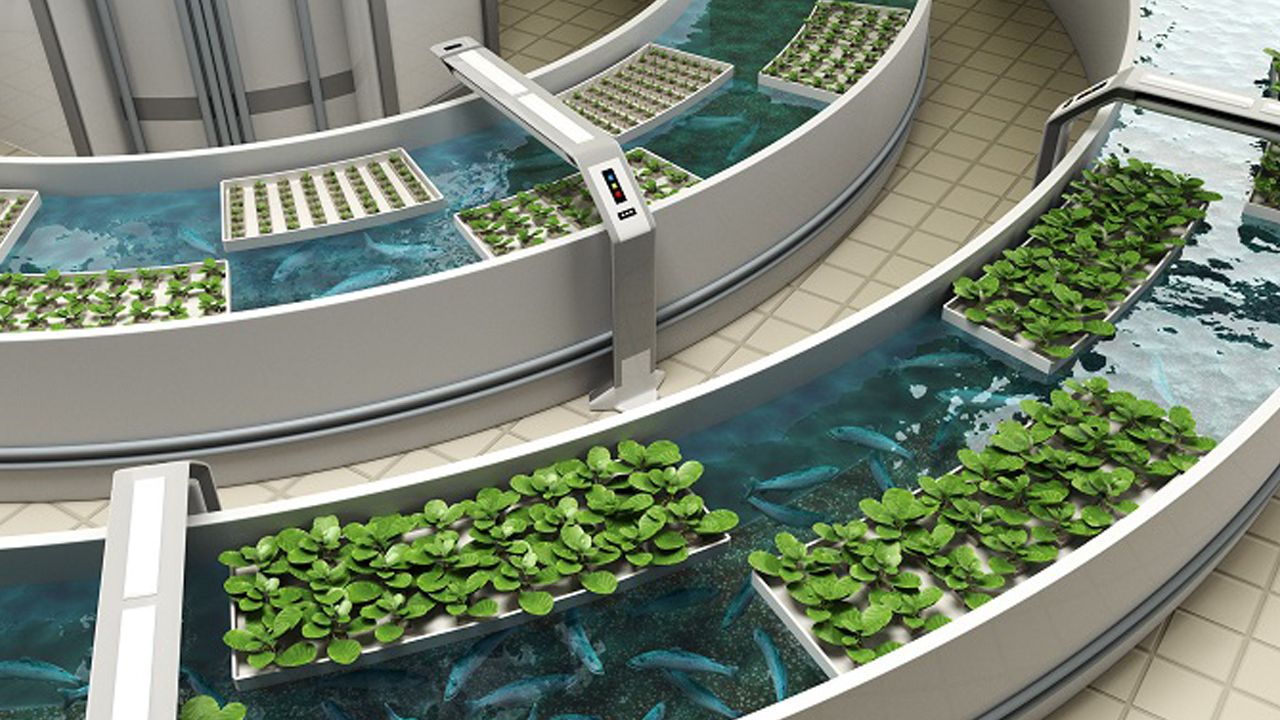Tilapia are well known for their food value and for being a “non fishy” fish. This fish is not only gaining in popularity as a seafood dish, what many people don’t know is that tilapia are also being used for growing vegetables.
 Aquaponic systems can be scaled up or scaled down, depending on your production needs. A small aquaponic system can produce up to 100 pounds of fresh fish such as tilapia twice per year. And let’s not forget the 200-pound vegetable yield!
Aquaponic systems can be scaled up or scaled down, depending on your production needs. A small aquaponic system can produce up to 100 pounds of fresh fish such as tilapia twice per year. And let’s not forget the 200-pound vegetable yield!
Unlike conventional hydroponics, aquaponics is 100% organic, and it shows in health of the plants and quality of vegetables. It allows you to grow many times more in a much smaller space and with less work. Unlike traditional gardening where you have to constantly water, weed, fertilize and battle with slugs, snails, gophers and other pests, with aquaponic source your biggest chore will be feeding the fish. For many people, that is one of the most enjoyable parts, but it can also be done with automatic feeders for those who are just too busy.
Just imagine growing your own backyard garden with delicious fruits and veggies, with no pesticides and without having to deal with those annoying weeds growing around. You will have a lot less to deal with watering, adding fertilizers and so on. Gardening is not that fun when a lot of hard work is involved, but aquaponics diy changes all that.
With aquaponics, you get the advantages of hydroponics but without the chore of fertilizing and keeping the nutrient levels just right. With aquaponics, you feed the fish, and they do the rest of the work. Instead of paying for chemical fertilizer, you just pay for fish food, unless you grow the fish food yourself. But the fish that can be produced, can more than cover the cost of the food. In that sense, your fertilizer can be free.
The price a 1 foot Kio can bring in is up to $400 USD each. There are even some that can grow to 2 feet long. These can fetch up diy aquaponics to USD is some markets. This allows the Aquaponic farmer to make a choice of raising fish for food or as a source of income that can be lucrative.
Breeding and selling fish can make a profit, or at least cover the cost of fish food and the whole system. You can grow tilapia, catfish, bass, trout or other food fish, aquarium fish, koi and other ornamental fish. A lot of people have fish ponds in their yards or fish in their homes. With aquaponics, you can put the fish to work for you growing fresh organic food.
Water pumps and filtration systems maintain a perfect environment for both fish and plants. Before starting the project, you will need to determine the type of plants and fish to grow. You need to plan on water temperature that suits the tank size. Other factors include calculating water heaters in watts; number of lights needed and water quality parameters for various types of fish.
 Some people do it as a hobby and benefit from it too. A Aquaponic system is not limited to some specific places, it can be applied anywhere. You can grow any type of plant and different species of fish in a common tank. Using the method is cheap, which makes very suitable for both fish and food production for small-scale farmers. To understand this subject further, one can read our eBook Aquaponics Made Easy that has been specifically developed for those who may be interested in aquaponics system.
Some people do it as a hobby and benefit from it too. A Aquaponic system is not limited to some specific places, it can be applied anywhere. You can grow any type of plant and different species of fish in a common tank. Using the method is cheap, which makes very suitable for both fish and food production for small-scale farmers. To understand this subject further, one can read our eBook Aquaponics Made Easy that has been specifically developed for those who may be interested in aquaponics system.

